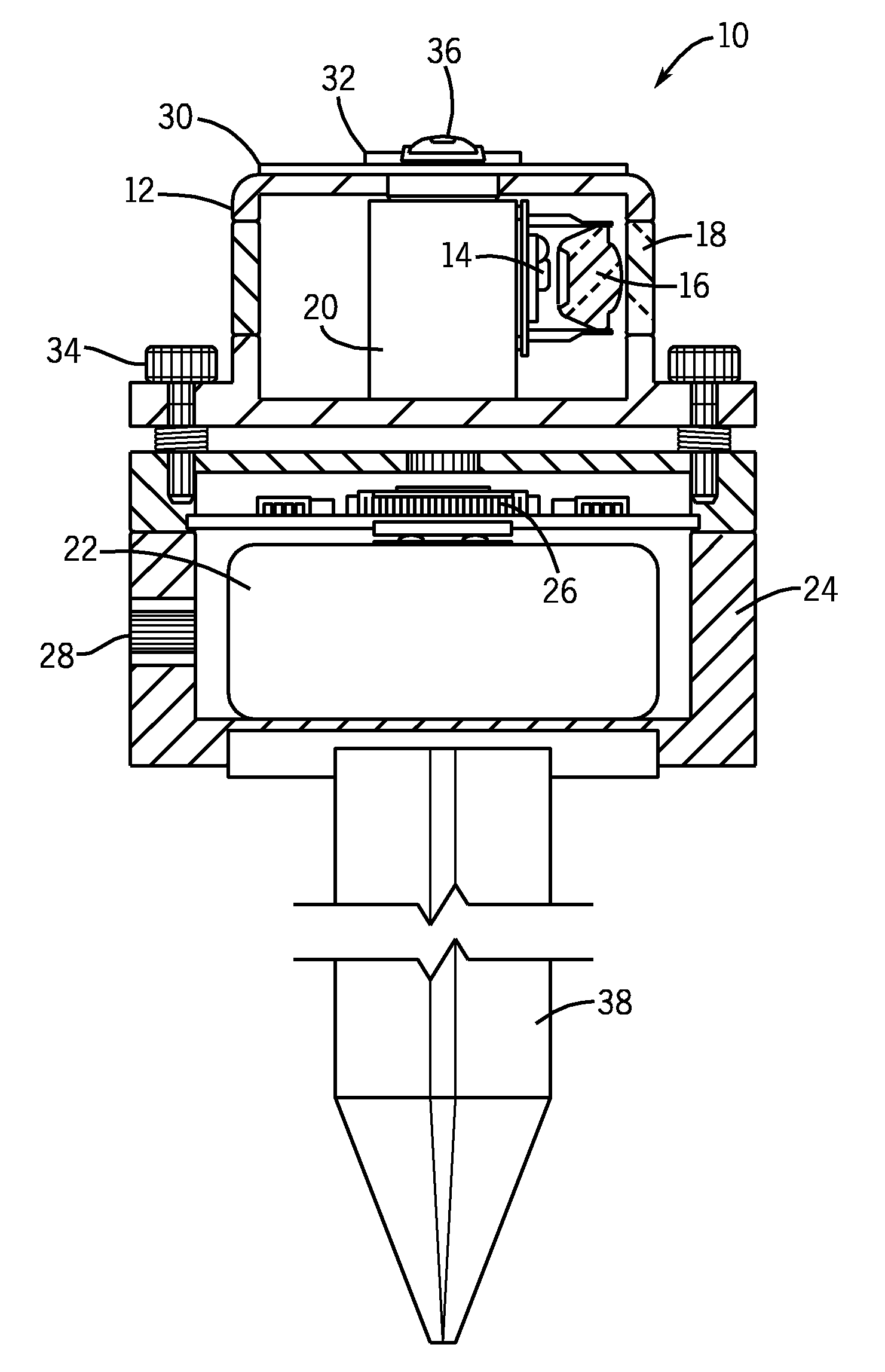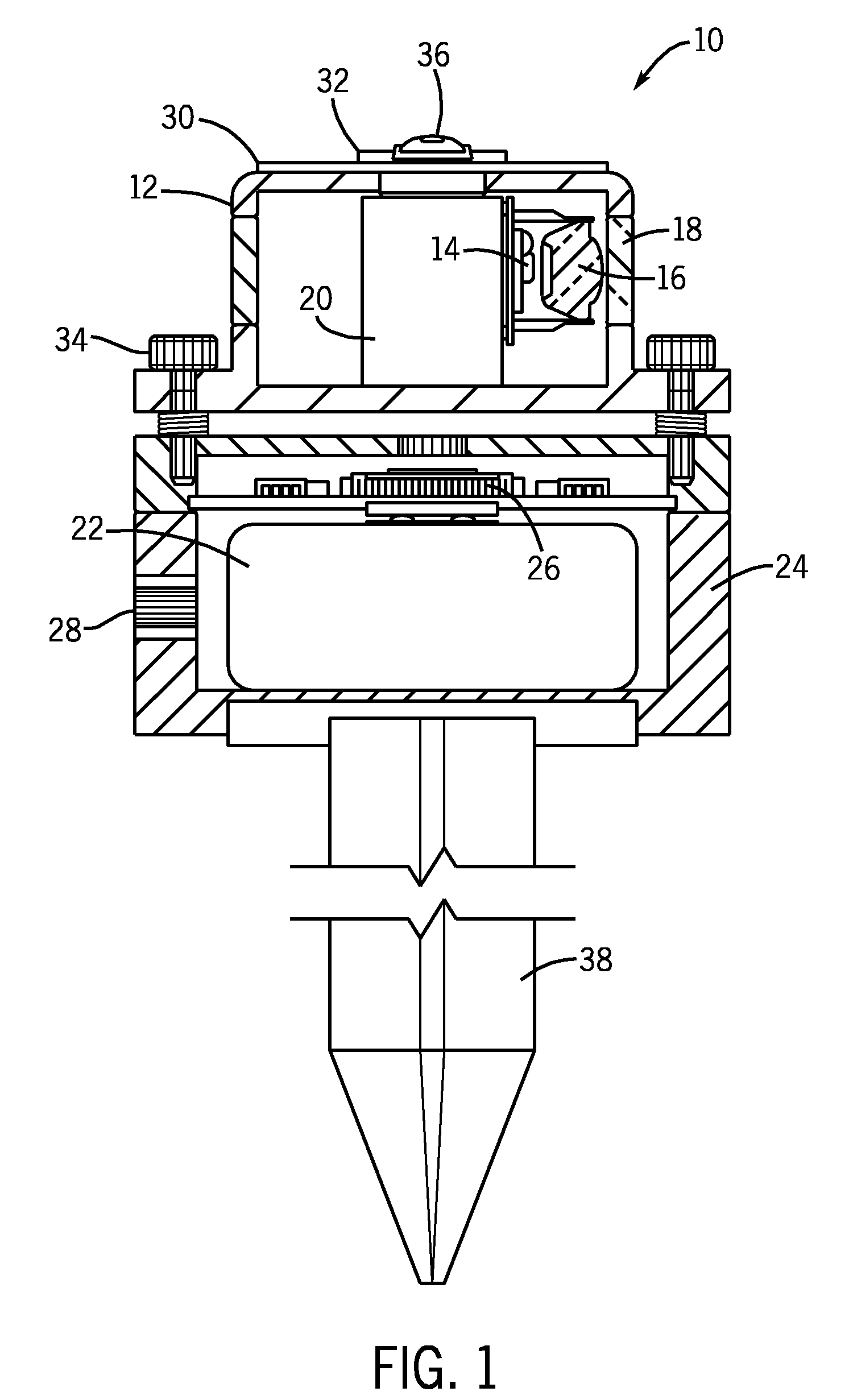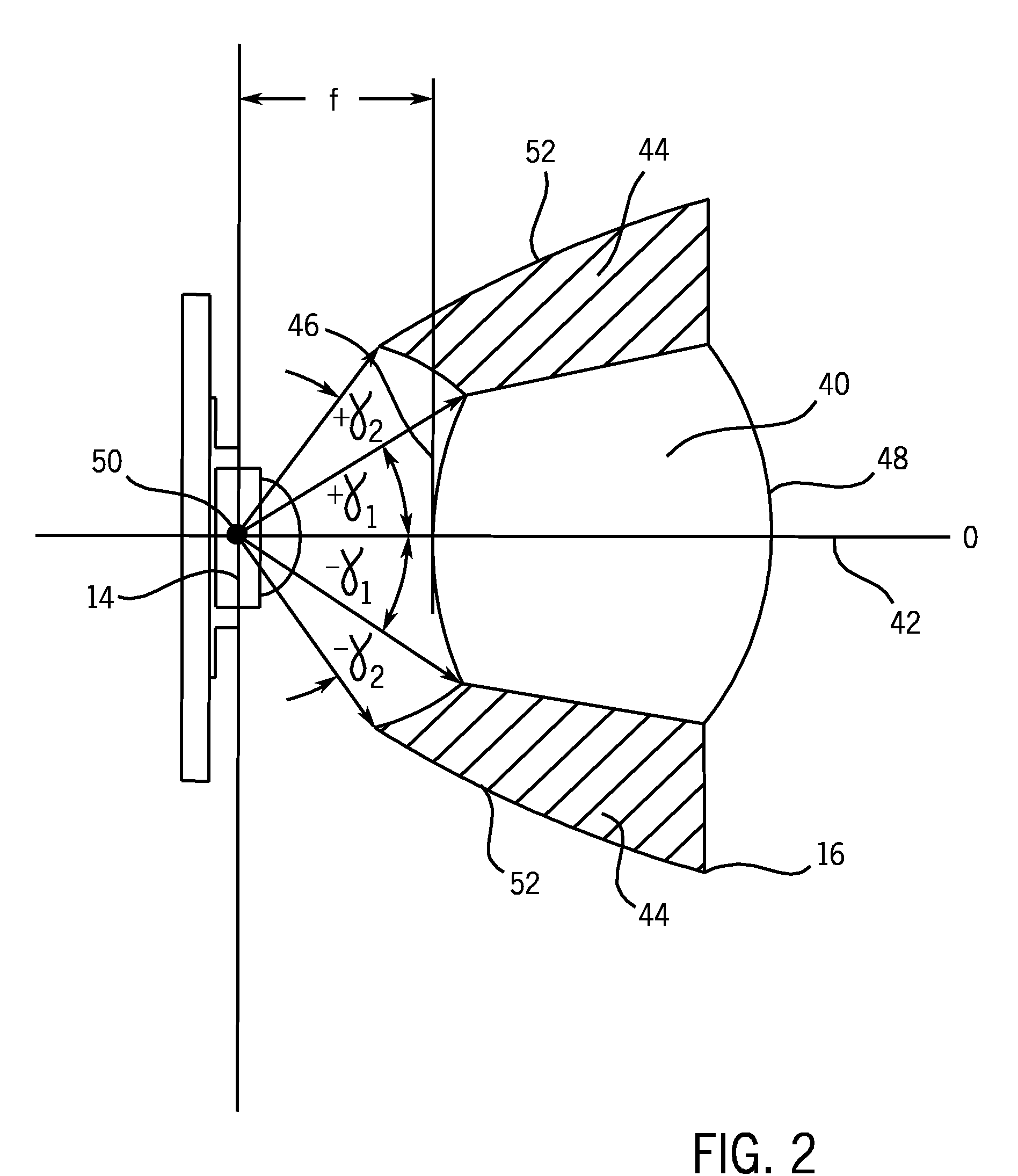Portable luminaire
a technology of airfield lighting and portability, which is applied in the direction of landing aids, instruments, roads, etc., can solve the problems of limited operation time on this second system without recharging, heavy and bulky luminaires, and bulky systems, and achieve wide divergence, high efficiency, and high efficiency
- Summary
- Abstract
- Description
- Claims
- Application Information
AI Technical Summary
Benefits of technology
Problems solved by technology
Method used
Image
Examples
Embodiment Construction
[0025]Referring now to FIG. 1, a deployable airfield luminaire 10 includes an optical module 12 having a light emitting diode (LED) 14 for emitting light with a wide divergence, and a non-imaging optical element 16 to compress the emitted light into a desired pattern. Module 12 further includes a transparent window 18 to transmit compressed light outside luminaire 10.
[0026]A base 20 is a heat sink for LED 14 and a holder for non-imaging optical element 16. A rechargeable power source 22 is installed in a housing 24 and connected to LED 14 through a controller 26 to an outside charger (not shown) through a connector 28 and to a solar element 30 located on the top of optical module 12 (connection not shown).
[0027]Controller 26 includes conventional electronics to provide remote control operation through a sensor 32.
[0028]Housing 24 includes a leveling mechanism 34 that adjusts luminaire 10 with respect to the horizontal surface using an aiming indicator 36. An installation hardware sy...
PUM
 Login to View More
Login to View More Abstract
Description
Claims
Application Information
 Login to View More
Login to View More - R&D
- Intellectual Property
- Life Sciences
- Materials
- Tech Scout
- Unparalleled Data Quality
- Higher Quality Content
- 60% Fewer Hallucinations
Browse by: Latest US Patents, China's latest patents, Technical Efficacy Thesaurus, Application Domain, Technology Topic, Popular Technical Reports.
© 2025 PatSnap. All rights reserved.Legal|Privacy policy|Modern Slavery Act Transparency Statement|Sitemap|About US| Contact US: help@patsnap.com



